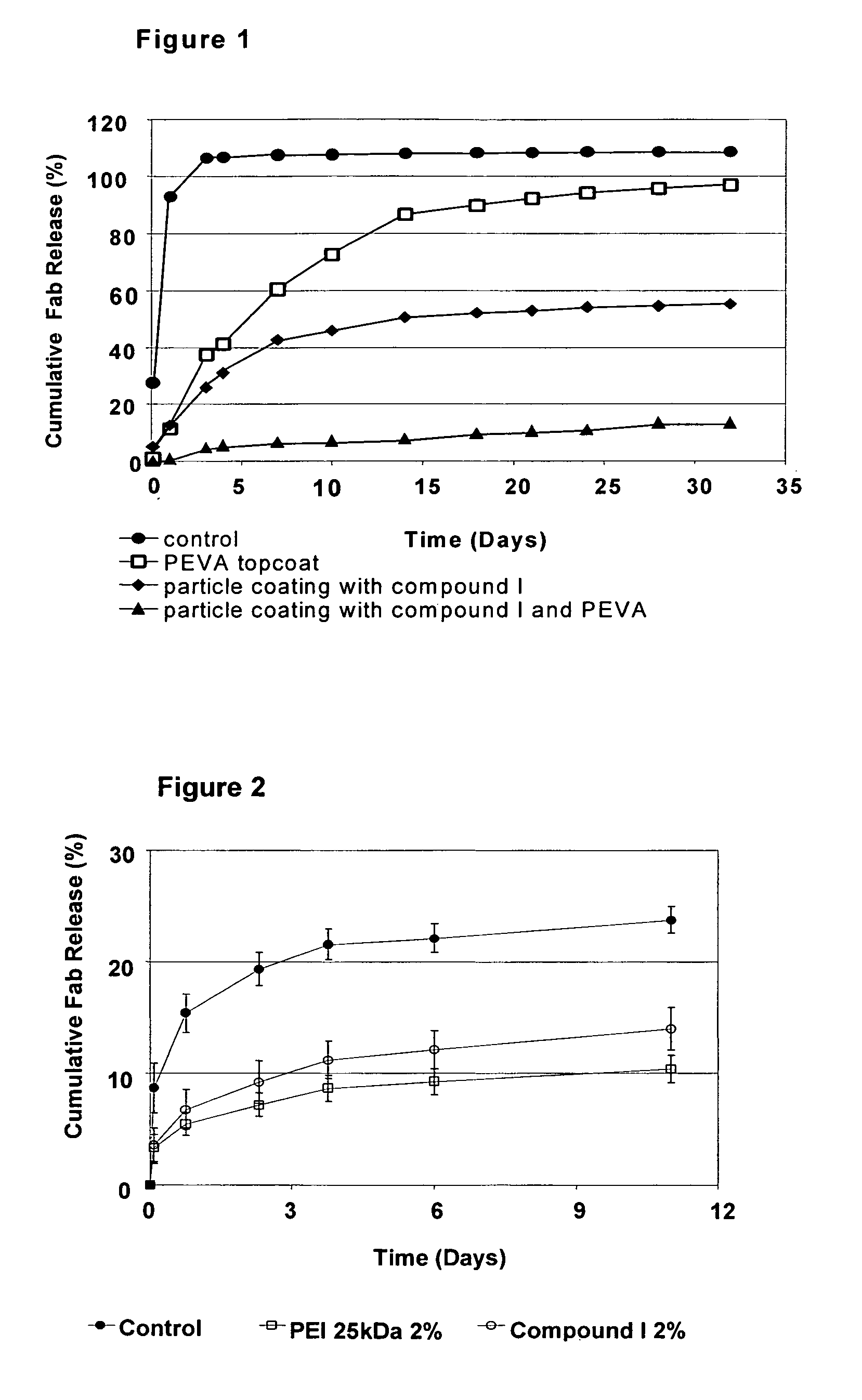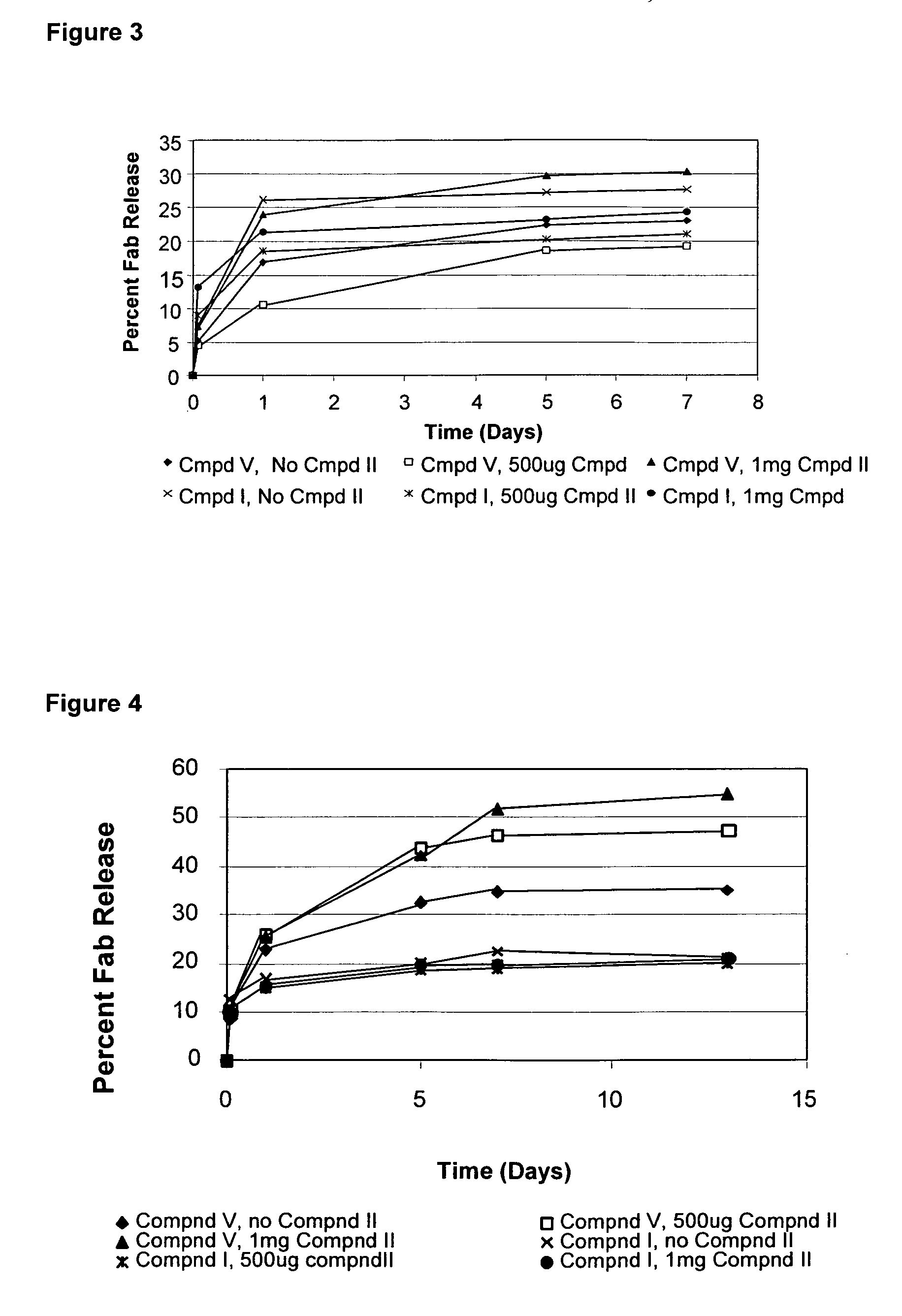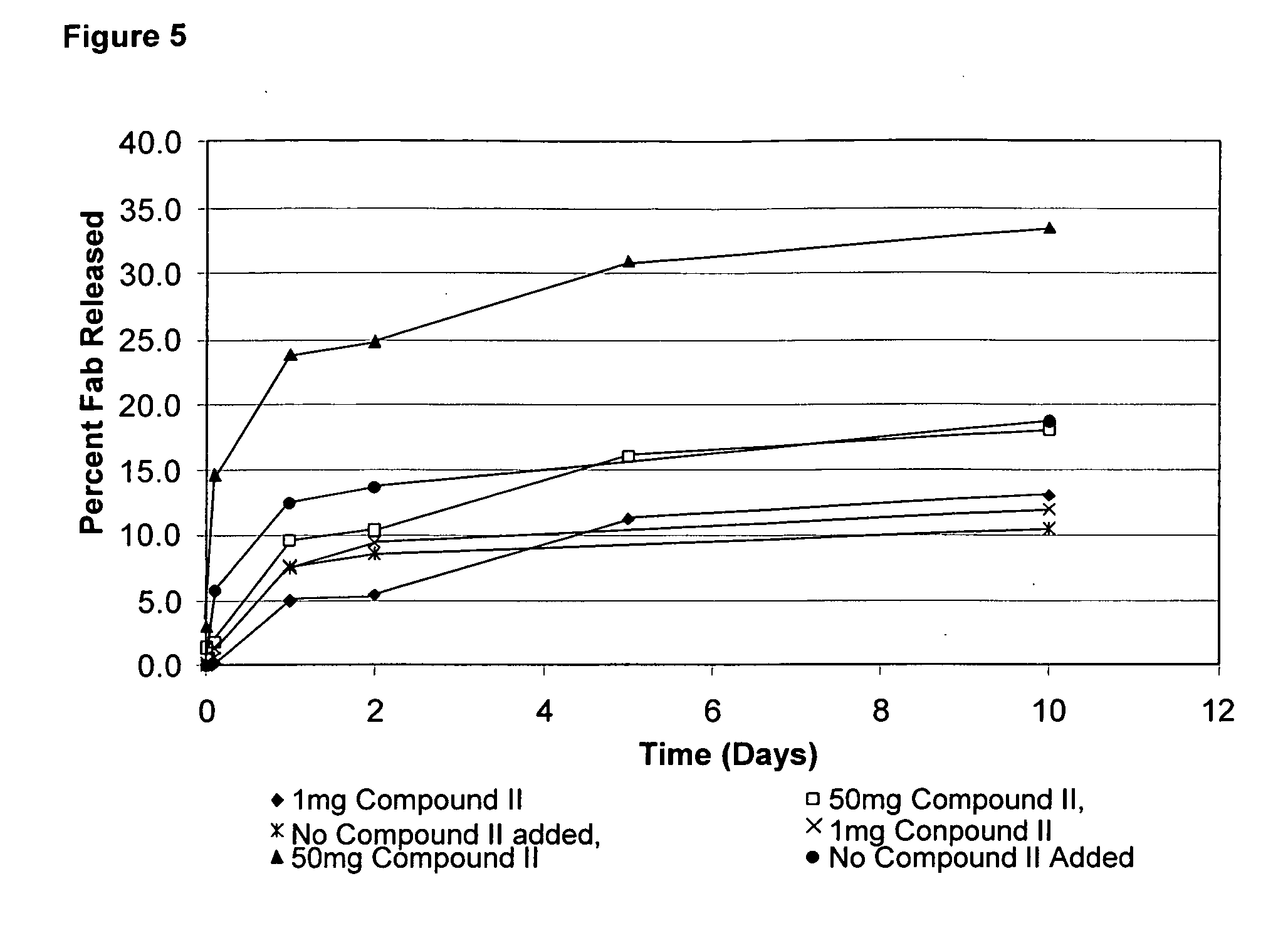Polypeptide microparticles having sustained release characteristics, methods and uses
a technology of polypeptides and microparticles, which is applied in the direction of peptides, immunoglobulins, drug compositions, etc., can solve the problems of inability to adequately take into the body certain therapeutic agents, inability to tolerate or stable in oral administration, and inability to achieve stable or adequate ingestion of certain therapeutic agents
- Summary
- Abstract
- Description
- Claims
- Application Information
AI Technical Summary
Benefits of technology
Problems solved by technology
Method used
Image
Examples
example 1
Formation of Fab Microparticles with Coatings
[0289]This series of experiments studied various microparticle coating compositions on colloidal gold microparticles. A 5 mM PBS solution without NaCl was prepared from a 10×PBS stock solution. The PBS was diluted in DDW to a total volume of 500 ml. The pH was adjusted to 7.31 after adding one drop of H3PO4.
1A. Preparation of Fab Microparticles with Colloidal Gold.
[0290]Fab (rabbit anti-goat (RαG)) was desalted using a BioRad desalting column (Econo-Pac™ 10 DG). Storage buffer from the columns was disposed. The columns were eluted with 20 mL of 5 mM PBS as prepared above. An amount of Fab (RαG), 2.5 mL, (A280(50 μL)=0.953, ε=1.35=>14.1 mg / mL) was put on each column and allowed to completely absorb. Fab was eluted from the columns with 4 ml of 5 mM PBS.
[0291]The Fab was then concentrated using four centrifuge filters (10 kDa cutoff, PALL LifeSciences), which were filled with 4 mL of the desalted Fab eluate and spun at 5500 g for 50 minutes...
example 1b (
EXAMPLE 1B(3)
Use of PEI or Compound I as Additive to Coating
[0303]Spray-dried Fab (non-specific) particles (70% Fab / 30% trehalose) were used, made by Brookwood Laboratories
[0304]For the preparation of a device coating composition, the formulations as described in Table 4 were prepared in 5 mL of chloroform with 25 mg Fab particles, 40% w / w of the total formulation, and a mixture of 1000PEG45PBT55 and pEVA polymers. PEI and Compound I were added last to the formulations.
TABLE 4Components of coating compositionProtein(from1000PEG55PBT45pEVAPEI or Compound Imicroparticles)mLmLmL%mg%(at 40 mg / ml)%(at 40 mg / ml)%(at 10 mg / ml)control402550.00.7810.000.16——PEI 2%402548.30.769.670.152.000.13PEI 10%402541.70.658.330.1310.000.63Cpd I 2%402548.30.769.670.152.000.13Cpd I 10%402541.70.658.330.1310.000.63
[0305]Four intravitreal implants were coated per formulation and coated as described in Example 1B(2). The coated intravitreal implants were dried in a nitrogen box overnight and put for release i...
example 1d (
EXAMPLE 1D(2)
[0317]Coating solutions for the prepared colloidal gold-Fab microparticles as prepared in Example 1A were prepared as follows. Compound V (TEMED-DQ, 10 mg) was dissolved in solvent containing 100 μL of methanol and 900 μL of chloroform. 100 μL of a 10 mg / mL solution of Compound V in 1:9 MeOH.CHCl3 was added to 50 mg of Fab particles (prepared in Example 1A). The mixture was allowed to react at room temperature for 30 minutes.
[0318]The Compound V-coated Fab microparticles were then dried in the vacuum oven until solvent was evaporated. A second coating solution was prepared dissolving Compound II (MD-methacrylate) a concentration of 50 mg / mL in a 30% w / v PEG 20 kDa solution in DDW at pH 7. Compound II / PEG solution, in a volume of 1 mL, was added to the Compound V-coated particles. Particles were mixed thoroughly and then placed under the UV lamp for 60 seconds using Blue Wave illuminator (Dymax Blue-Wave™200 operating at 330 nm between about 1 and 2 mW / cm2). After mixing...
PUM
| Property | Measurement | Unit |
|---|---|---|
| molecular weight | aaaaa | aaaaa |
| concentration | aaaaa | aaaaa |
| concentration | aaaaa | aaaaa |
Abstract
Description
Claims
Application Information
 Login to View More
Login to View More - R&D
- Intellectual Property
- Life Sciences
- Materials
- Tech Scout
- Unparalleled Data Quality
- Higher Quality Content
- 60% Fewer Hallucinations
Browse by: Latest US Patents, China's latest patents, Technical Efficacy Thesaurus, Application Domain, Technology Topic, Popular Technical Reports.
© 2025 PatSnap. All rights reserved.Legal|Privacy policy|Modern Slavery Act Transparency Statement|Sitemap|About US| Contact US: help@patsnap.com



